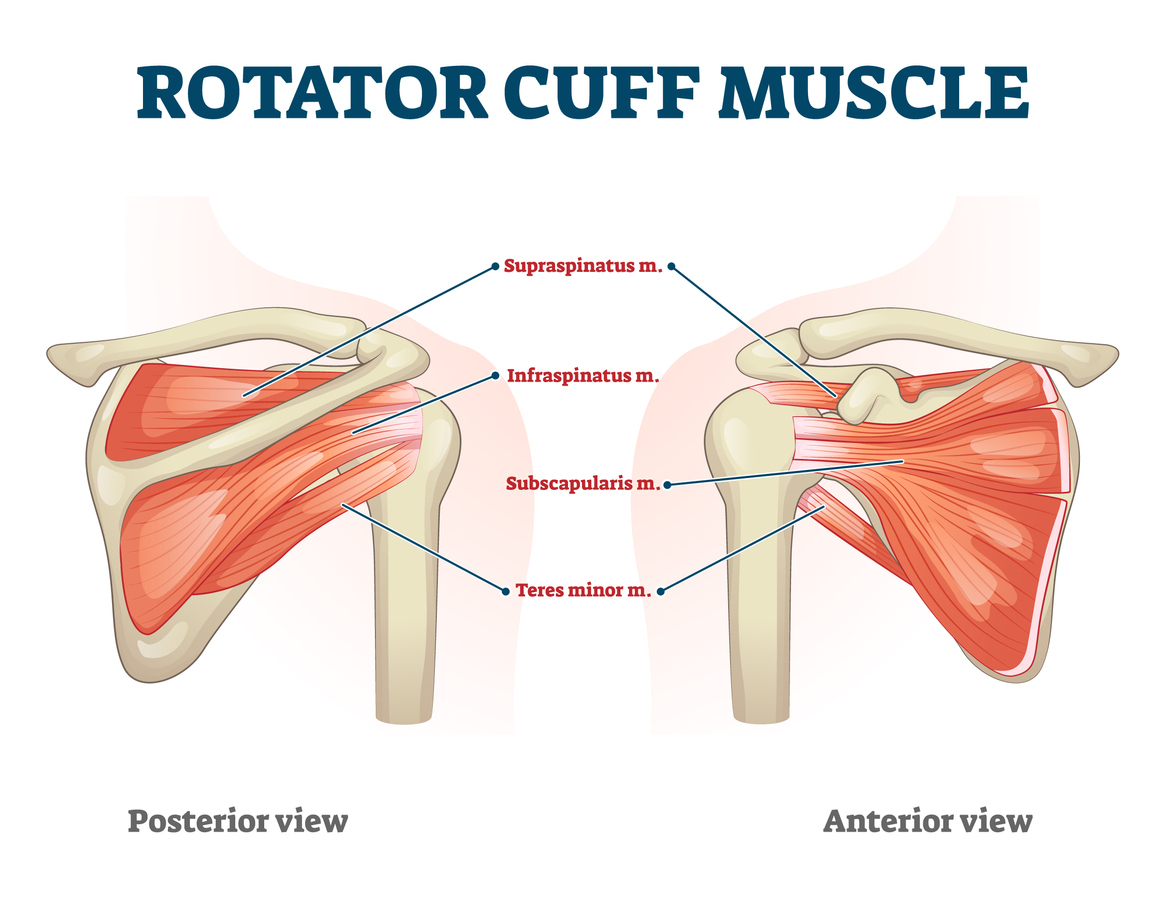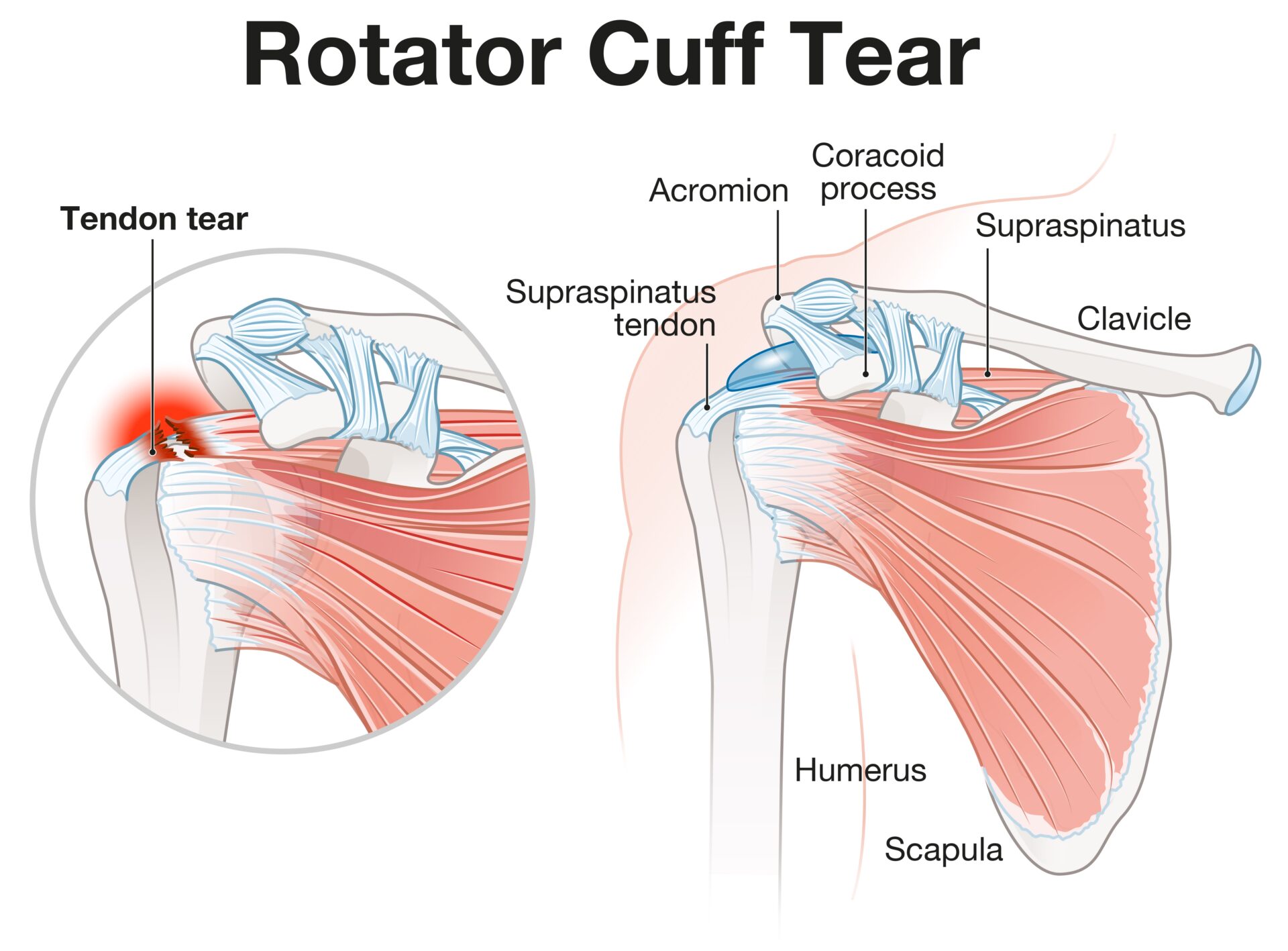A rotator cuff tear occurs when one or more of the rotator cuff tendons is torn and no longer fully attaches to the head of the humerus.
This injury can vary in severity, ranging from partial tears to complete tears that may significantly impact shoulder function.
A full thickness or complete tear means all of the tendon has separated from the bone, whereas a partial or incomplete tear means the tendon has been damaged or frayed but not completely severed.
The most common rotator cuff tendon to be damaged is the supraspinatus tendon.
A rotator cuff tear is often the result of wear and tear from daily use and can develop slowly, resulting from repetitive motions or age-related degeneration. In other cases, it can happen suddenly such as from falling on the outstretched arm.
Rotator cuff injuries are common, especially in people over 40 years of age, athletes (particularly in sports like tennis, swimming and cricket), and people whose work involves repeatedly lifting their arms overhead.
When a rotator cuff tear occurs, symptoms may include:
A rotator cuff is a group of four muscles and associated tendons that hold the ball of the humerus (upper arm bone) in place in the shoulder socket. The muscles pass from the scapula (shoulder blade) and attach to the top of the ball joint of the humerus. Each muscle aids in a specific motion such as raising and rotating the arm.
The supraspinatus is responsible for movement away from the centreline of the body. This muscle produces approximately the first 15 degrees of motion before the deltoid and trapezius muscles take over. It also holds the humerus in place and keeps the upper arm stable.
The infraspinatus is a thick, triangular muscle that covers the back of the shoulder blade. It is the main muscle responsible for lateral rotation of the arm away from the centreline of the body.
Teres minor is a small, narrow muscle on the back of the shoulder blade just below the infraspinatus. It also contributes to the lateral rotation of the arm.
The subscapularis is a large, triangular muscle lying below the other three muscles but at the front, rather than the back, of the upper arm. It is the strongest, largest, and most used of the four rotator cuff muscles and is especially important for medial rotation of the arm, although it participates in most shoulder motions.

Degenerative tears, if not associated with arm weakness, may be successfully treated without surgery. This usually involves gentle physiotherapy, simple pain relief (regular paracetamol or ibuprofen) and avoiding overhead activities.
Anti-inflammatory steroid injections can also be helpful to manage pain and discomfort.
In more severe cases such as acute tears following an injury or when symptoms fail to improve despite these measures, surgical repair of the tear may be required.
A rotator cuff repair involves reattaching the torn tendon to the humerus bone using sutures and anchors.
The procedure may be performed as an open technique or arthroscopically (keyhole surgery).
Most patients experience improved shoulder strength and less pain following a rotator cuff repair and each technique has similar medium to long-term results.

If you are looking to book an appointment, please call us on